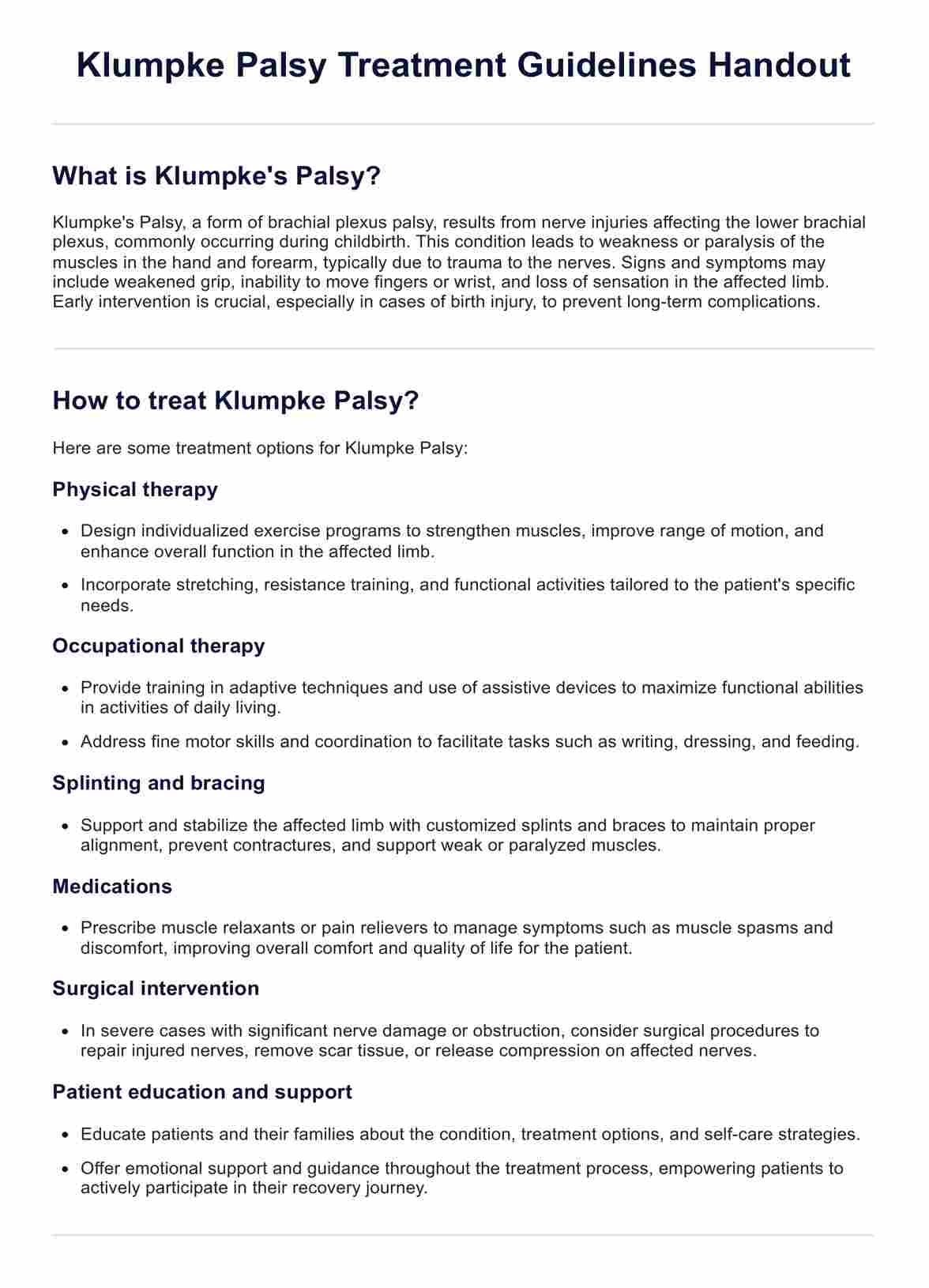Klumpke's palsy in adults can result from trauma or injury to the lower brachial plexus, often due to accidents, falls, or sports injuries.

Klumpke Palsy Treatment Guidelines Handout
Get the complete Klumpke Palsy Treatment Guidelines Handout & Example for free! Download Carepatron's PDF now and learn more about this condition and its treatment options.
Use Template
Klumpke Palsy Treatment Guidelines Handout Template
Commonly asked questions
Treatment for a compressed brachial plexus may include physical therapy, medications for pain management, and in severe cases, surgical intervention to relieve pressure on the nerves.
Erb's Palsy affects the upper brachial plexus, leading to weakness or paralysis in the shoulder and upper arm, while Klumpke's palsy involves the lower brachial plexus, causing weakness or paralysis in the hand and forearm.
EHR and practice management software
Get started for free
*No credit card required
Free
$0/usd
Unlimited clients
Telehealth
1GB of storage
Client portal text
Automated billing and online payments











